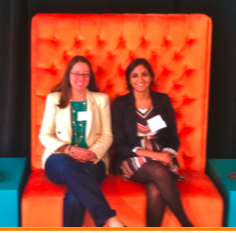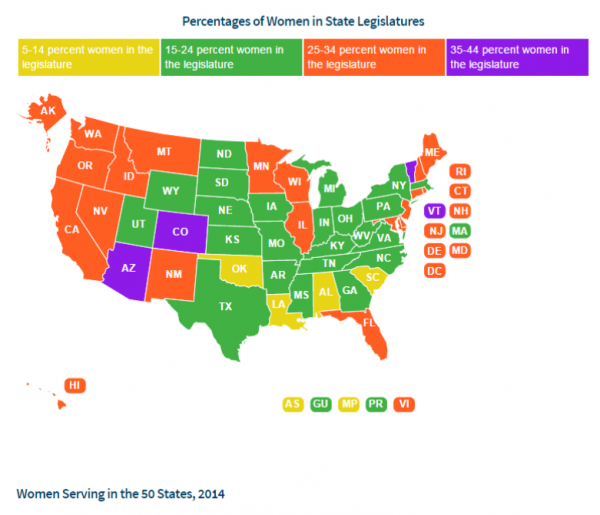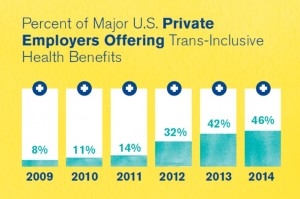CT’s First Sensory-Friendly Performance Ready at Hartford Stage
/Hartford Stage will host a first-ever sensory-friendly performance of its annual holiday classic, A Christmas Carol - A Ghost Story of Christmas on Tuesday, December 9. This will be the first time that Hartford Stage has offered this type of performance for the community – and apparently the first such effort in Connecticut. A “sensory-friendly” performance is a theatre production that is modified to accommodate individuals with sensory-input disorders, such as people on the autism spectrum, those with anxiety, and people with a range of cognitive abilities.

At the Tuesday night performance, “house rules” will be relaxed – people may need to get up, move around, and leave the theatre in the midst of the performance. There is no expectation that the audience will be completely quiet during the performance. In addition, a Quiet Room will be available with sensory-friendly toys for anyone who needs a break from the performance.
"Sensory-friendly performances are designed to create a performing arts experience that is welcoming to all families of children with autism or other disabilities which create sensory sensitivities," says Jennifer Roberts, director of education for the theater. The Hartford Stage website adds, “Our goal is to create an environm ent where people with autism or sensory needs, along with their families, can enjoy coming to the theatre together and will feel comfortable, supported and free to be themselves.”
ent where people with autism or sensory needs, along with their families, can enjoy coming to the theatre together and will feel comfortable, supported and free to be themselves.”
Officials point out that while the script of A Christmas Carol will not change, some of the technical elements will be softened to accommodate sensitive ears and eyes. For example, haze will be reduced and strobe lights will be removed from the production. Lights in the audience will be remain lit at a dim level during the entire show to allow safe movement in and out of the theatre.
Abrupt and loud sound effects will be lowered, and there will be a signal to the audience to warn them that a potentially jarring moment is about to happen, so that caregivers can be ready to help those with sensory sensitivities.
The hope is to achieve “a judgment-free, fun experience for the entire family.” About 150 people, students and their families, are expected to attend the performance.
Hartford Stage has prepared a plot synopsis and social story to help prepare audience members for the experience. They have encouraged families and caretakers to read the synopsis of A Christmas Carol and use the social story to prepare for the whole theatrical experience, from beginning to end.
The production, designed for age 9 and up, is about two hours long with a 15-minute intermission. Theatre Development Fund’s Autism Theatre Initiative served as an advisor for the performance.
[view NBC Connecticut news story on the sensory-friendly performance]



 rt this new chapter,” said co-founder and CEO Kate Pipa, who lives in Shelton. “And we are excited to bring kids a new box each month of hands-on fun that also doubles as a learning opportunity and is making social impact for the kids and for our partner organizations.”
rt this new chapter,” said co-founder and CEO Kate Pipa, who lives in Shelton. “And we are excited to bring kids a new box each month of hands-on fun that also doubles as a learning opportunity and is making social impact for the kids and for our partner organizations.” Making the grade are Bridgeport, Hartford, and New Haven. Their respective round one opponents make the Connecticut cities strong underdogs in need of a sizable population surge. Bridgeport goes up against San Francisco, Hartford faces Baltimore, and New Haven is up against Portland. (No, not Portland, Connecticut.)
Making the grade are Bridgeport, Hartford, and New Haven. Their respective round one opponents make the Connecticut cities strong underdogs in need of a sizable population surge. Bridgeport goes up against San Francisco, Hartford faces Baltimore, and New Haven is up against Portland. (No, not Portland, Connecticut.) one of two versions of the game, geographic level: metro areas or states. Then they click on the name of the city in each match-up that you think has the larger population. Green shows a correct answer, red indicates an incorrect answer. Players are urged to “see how close you can come to a perfect score of 63” and then asked to “mouse-over results to view the most current population estimates for each pair.”
one of two versions of the game, geographic level: metro areas or states. Then they click on the name of the city in each match-up that you think has the larger population. Green shows a correct answer, red indicates an incorrect answer. Players are urged to “see how close you can come to a perfect score of 63” and then asked to “mouse-over results to view the most current population estimates for each pair.”






 ld University at #396. Outside the top 400 from Connecticut were Wesleyan University, Yale University, Quinnipiac University and Trinity College.
ld University at #396. Outside the top 400 from Connecticut were Wesleyan University, Yale University, Quinnipiac University and Trinity College. ity in New Jersey, Florida Agricultural and Mechanical University, Florida International University, and six institutions in California, including California State Polytechnic University, the University of California and Cal State.
ity in New Jersey, Florida Agricultural and Mechanical University, Florida International University, and six institutions in California, including California State Polytechnic University, the University of California and Cal State.
 Republicans. The House Speaker, House Majority Leader, Senate President Pro Tempore Senate Majority Leader, and Senate Republican Leader for the 2015 session are men, as was true in the previous legislative session. Connecticut has seen a woman Speaker of t
Republicans. The House Speaker, House Majority Leader, Senate President Pro Tempore Senate Majority Leader, and Senate Republican Leader for the 2015 session are men, as was true in the previous legislative session. Connecticut has seen a woman Speaker of t he House, but there has not been a woman selected to serve as Senate President Pro Tempore or Majority Leader.
he House, but there has not been a woman selected to serve as Senate President Pro Tempore or Majority Leader.
 t households unable to afford all of life’s basic necessities far exceeds the official federal poverty statistics. United Way calls this newly revealed demographic ALICE, an acronym for Asset Limited, Income Constrained, Employed.
t households unable to afford all of life’s basic necessities far exceeds the official federal poverty statistics. United Way calls this newly revealed demographic ALICE, an acronym for Asset Limited, Income Constrained, Employed. an double the official U.S. poverty level.
an double the official U.S. poverty level.

 with the Equality Federation, provide “a revealing snapshot of LGBT equality in municipalities of varying sizes, and from every state in the nation,” the report noted.
with the Equality Federation, provide “a revealing snapshot of LGBT equality in municipalities of varying sizes, and from every state in the nation,” the report noted. tive state laws.
tive state laws.






























